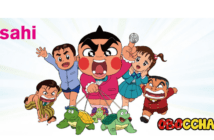For thousands of years, stories have used a traditional structure that usually includes a character transformed as a result of a conflict that he must overcome. A successful story is compelling; it entertains, it amazes us, keeps us glued to the page or the screen. “There are only about seven themes in fiction”, says Stan Hayward, author of Scriptwriting for Animation, “and they include Love, Money, Power, Revenge, Survival, Glory and Self-Awareness. It is the quest for these that makes a story.” Children’s tales include a variation of these plots or a combination of them. But an additional element is essential in children content: the partnership of the viewer -in this case the child – and the author. In this partnership, the child anticipates what is going to happen next and gets a thrill from the fact that he knows in advance what the character’s in the story don’t realise yet. Good content for children will always include these two elements: a structure and emotion that anticipating events produce in the viewer.
As media platforms have multiplied, children’s attention has divided, and to engage them is increasingly more challenging; nonetheless, the elements of a good story remain even if the way the story is experienced is delivered differently. What has changed is that we now have a viewer that is more sophisticated, has immediate access to thousands of channels or apps and with one hand movement can shut off the tablet, the smart tv or the mobile device.
The role of a content producer has become increasingly more demanding. How can we produce magic in just a few seconds? How can we maintain the thrill and the anticipation so that the viewer stays with us?
We should ask ourselves a few questions and seek some answers. What are the kids’ need and want? What are their interests and passions? How can we translate the thrill of play? Why do kids use different devices?
What is important is that kids are looking for the same things that they have always looked for in entertainment and play: to use their imagination, to discover new worlds, to create, to share with friends, to pursue their hobbies, to tell stories and to expand their horizons. A child’s sense of wonder and discovery has remained despite the changes in technology and at the core is the magic of storytelling. We, as producers, just need to adapt and deliver a new experience across multiple platforms. We need to satisfy their hungry appetites wherever they are to be successful. But this provides us with more opportunities to tell that story in many different ways. We shouldn’t fear technology, we should embrace it. Ultimately, a good story, with a compelling plot, and fun characters, will always prevail.
This is the latest in a series of posts from MIPCOM 2017’s MIPBlog Ambassadors, a group of industry experts coordinated by consultant Debbie Macdonald, who’ll be sharing their insight here in the run-up to MIPCOM this October. Stay tuned for more!




